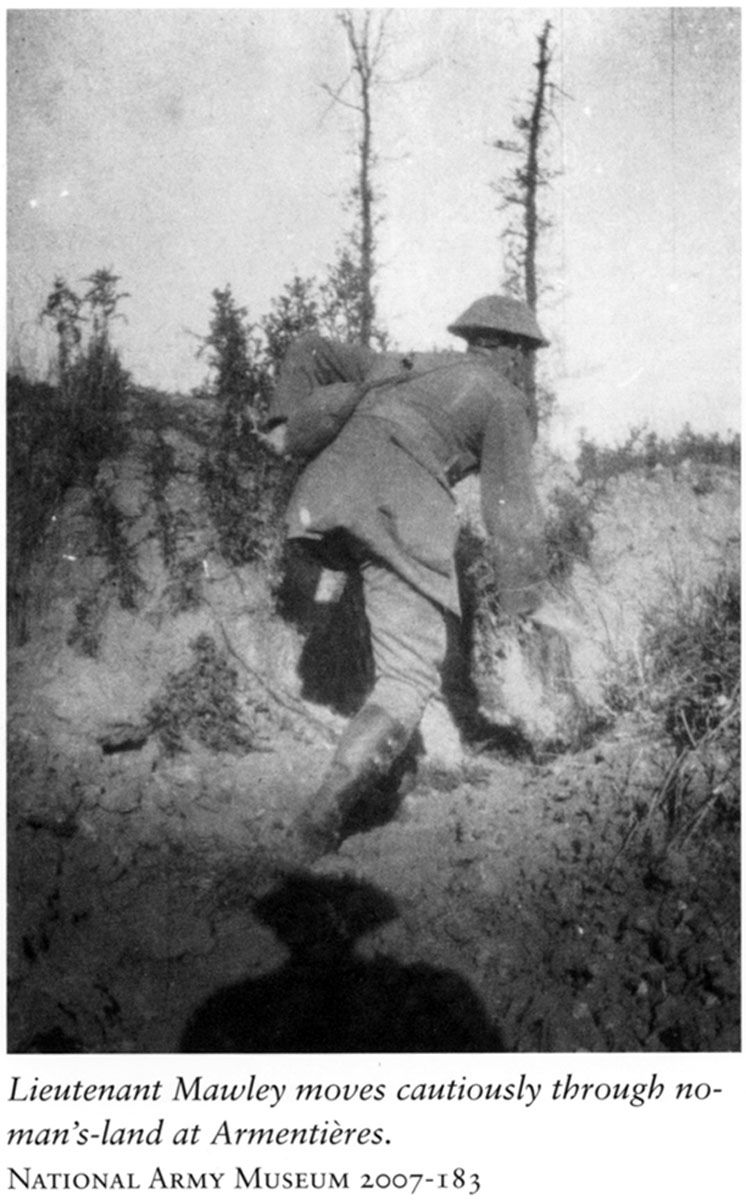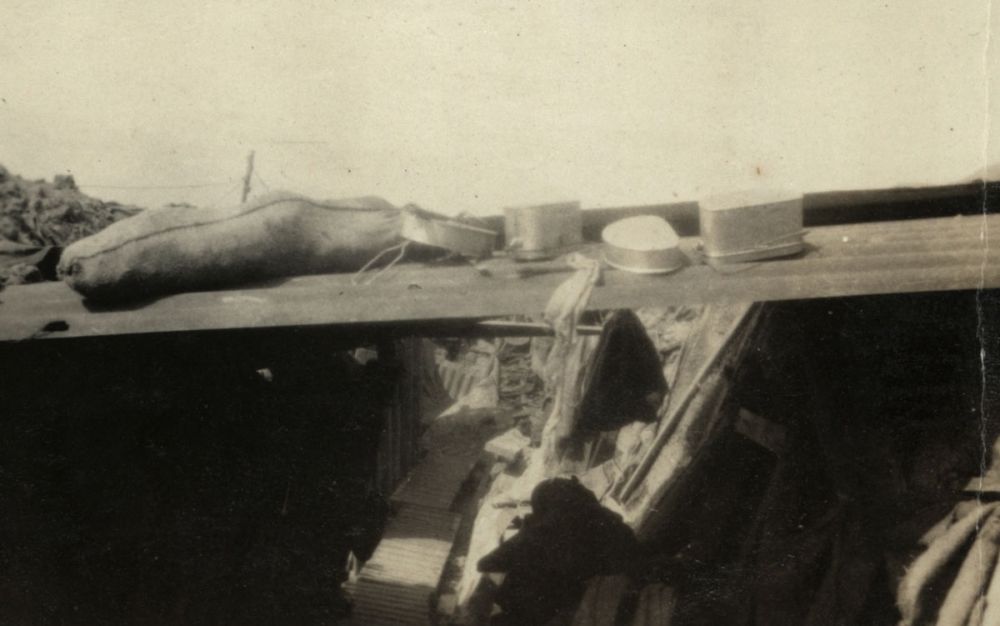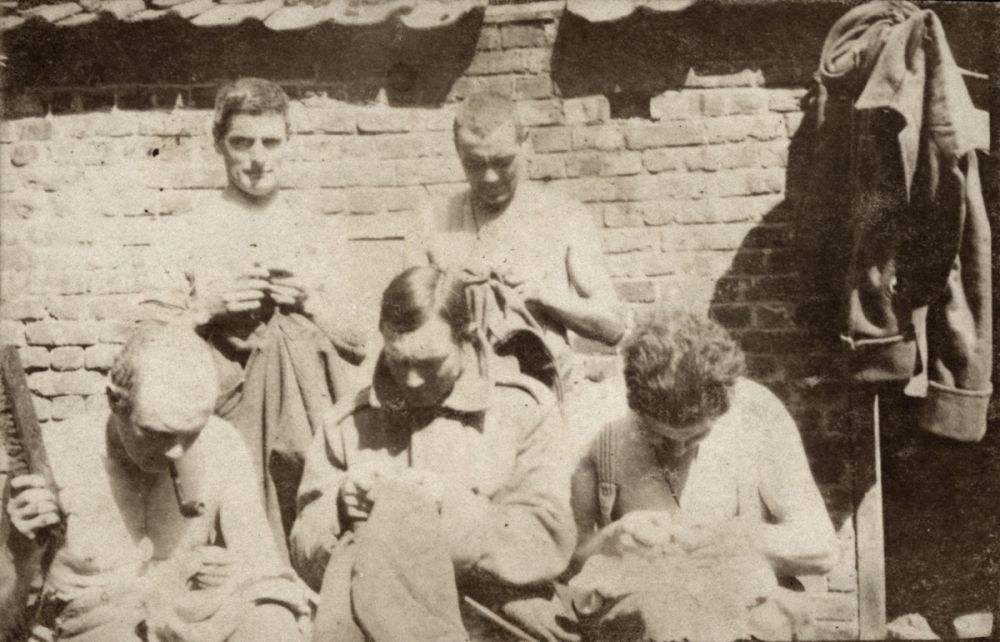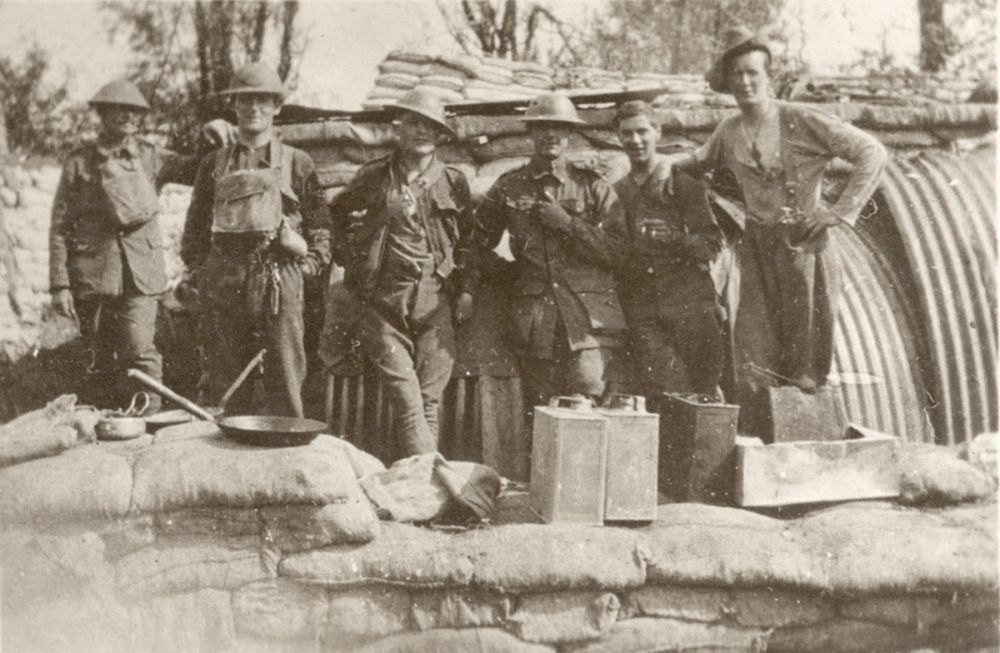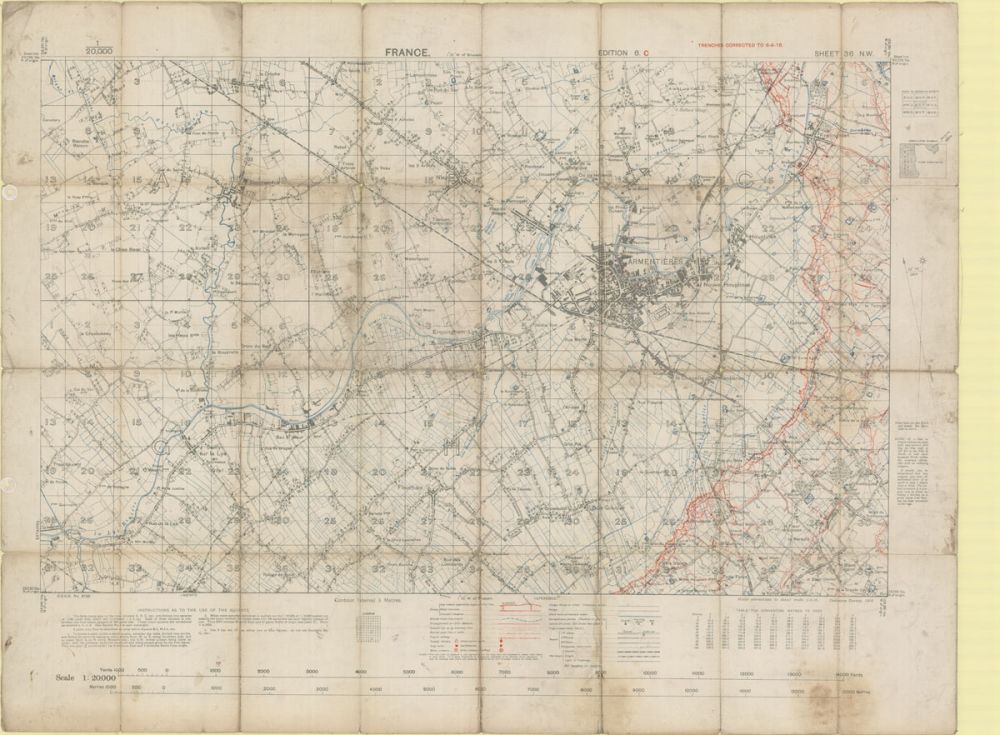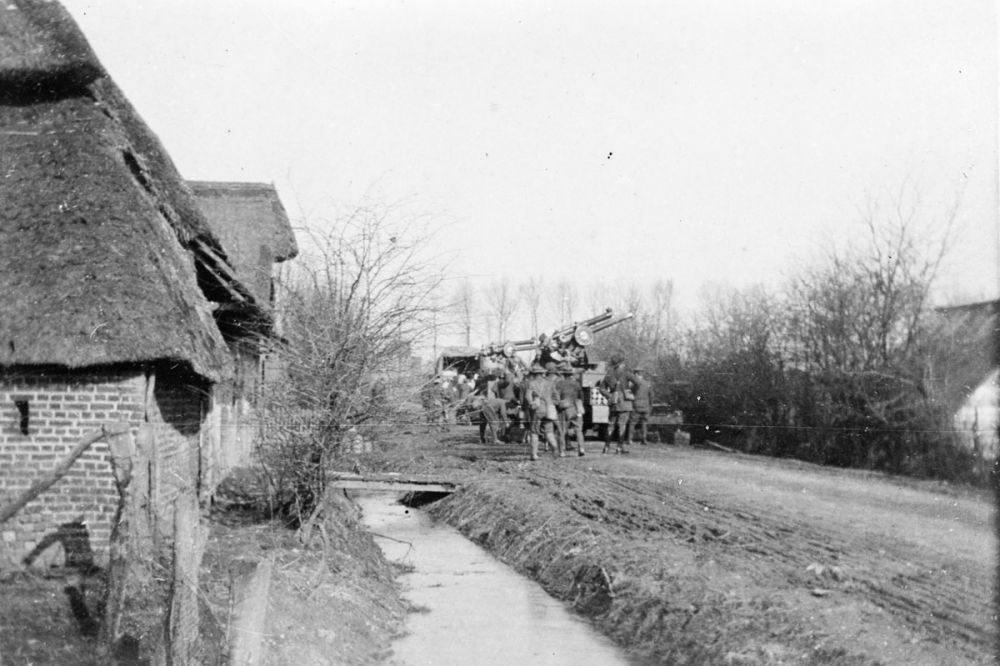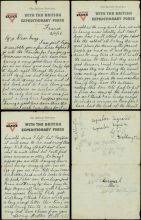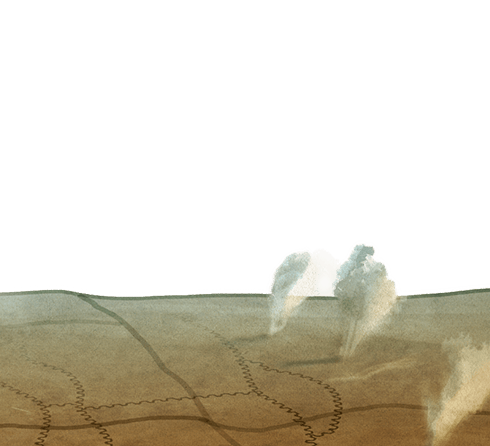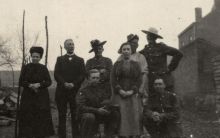The Mushroom
You are at the point on the New Zealand frontline known as the Mushroom. The Mushroom salient, was a trench system that jutted out towards the transmission lines that you can see in front of you in the centre of the field. The New Zealanders were within 60 metres of the German frontline and the trenches in this area were built up by breastworks, above ground, because - as you can see from the ditches - the water table is very high in these parts.
The wet, muddy conditions resulted in soldiers suffering from the dreaded ‘trench foot’, where their toes and feet started to rot and become infected. It was a constant battle, fought by rubbing copious amounts of whale oil onto the feet to protect them. The inexperienced New Zealanders suffered many casualties in the wet conditions, and trench foot, and diseases such as trench fever - which was caused by lice - were some of the most common ailments.
Behind you, a kilometre back towards Armentières was the support line. Life in the trenches there was the continuous repairing of the breastworks with sandbags and wood. There was constant artillery fire, German snipers dominated the area, and their machine guns wreaked havoc. The enemy gunners were generally known as ‘Parapet Joe’ and at night, when the sentry was looking over the top, they would have their machine gun fixed on the New Zealand frontline and would fire along the breastwork sandbags, keeping everyone’s heads down and sometimes wounding or killing anyone unlucky enough to be looking over at the time. By 1916 after two years of warfare, the methods of trench fighting had evolved. Both sides now wore steel helmets and had gas masks, grenades, shorter rifles and bayonets. Light Lewis machine guns were introduced that could be carried by one man, as well as all manner of crude home-made trench weapons for close-quarter fighting.
There were intense raids by both sides. The New Zealanders initially mounted a series of raids in June and July. Some were successful, and would end with prisoners taken, documents and maps stolen, and minimal casualties. Others were failures, with stiff resistance, resulting in many casualties and a bloody retreat. On 3 July, the Germans raided the Mushroom where you are standing now, and at the time it was held by the 1st Canterburys. The Germans began with an intense artillery bombardment and destroyed the breastworks, burying men in their dugouts. They then attacked. Their first wave was repulsed, but with their second attack they got into this area, took three prisoners and caused another 116 Canterbury casualties. This was an example of the type of warfare going on at the time the New Zealanders first went into the trenches - and the casualties were part of the cost of learning how to fight on the Western Front. The New Zealanders would come back here again in October after the first Somme offensive, but over May, June, July, and August 1916, this was their home, and their introduction to trench warfare.


